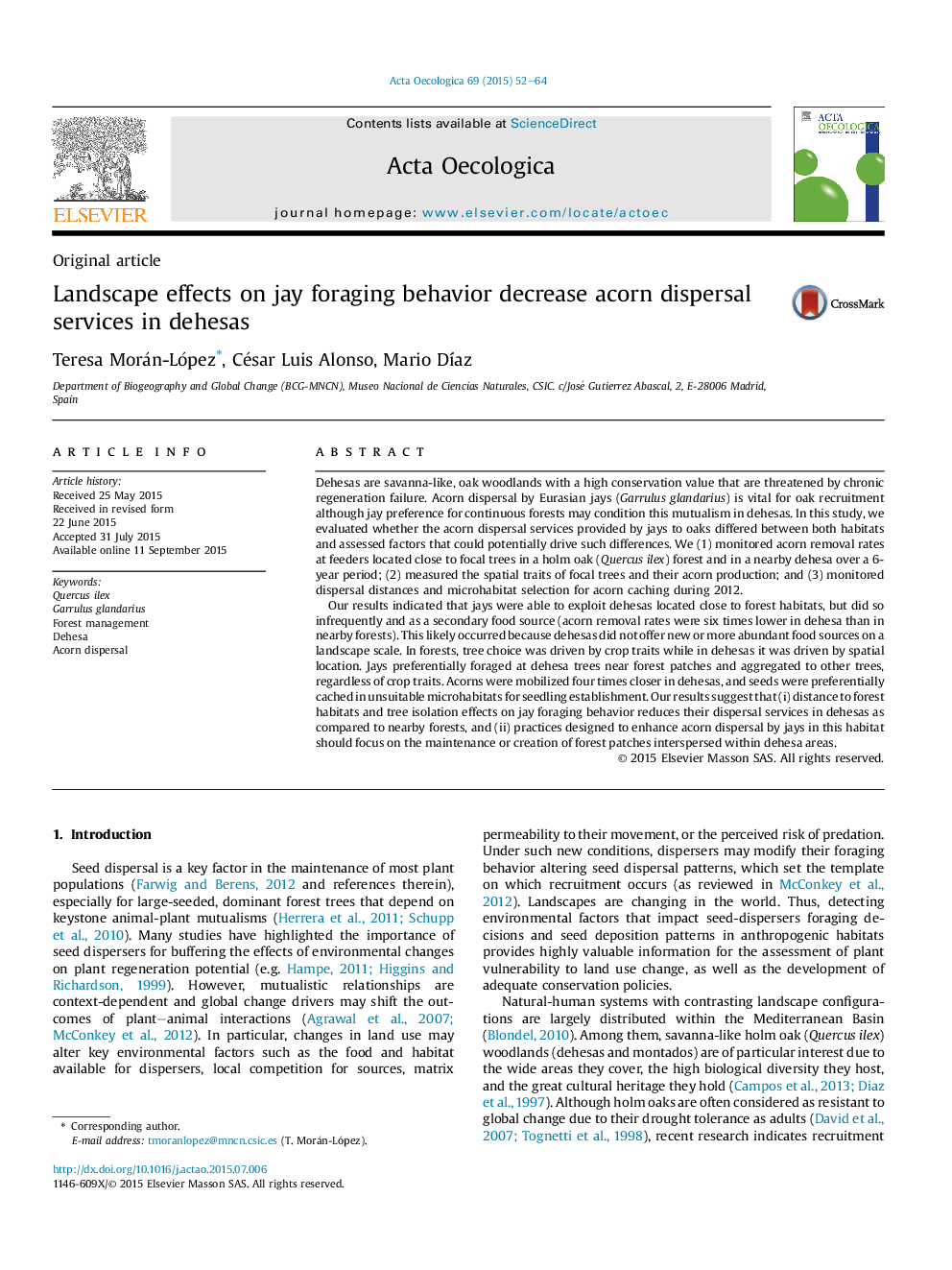| کد مقاله | کد نشریه | سال انتشار | مقاله انگلیسی | نسخه تمام متن |
|---|---|---|---|---|
| 4380641 | 1617703 | 2015 | 13 صفحه PDF | دانلود رایگان |
• Are jays' dispersal services in dehesas similar to those found in forests? Which environmental factors drive such changes?
• Landscape structure (distance to forests and tree isolation) limited tree visitation rates by jays.
• Dehesa trees located further than 2 km away from the forest displayed extremely low visitation rates (<4%).
• Acorns taken in dehesas were cached within tens of meters and in unsuitable microhabitats for seedling recruitment.
• Conservation strategies should focus on ensuring the presence of nearby forest patches and promoting higher aggregation of dehesa trees.
Dehesas are savanna-like, oak woodlands with a high conservation value that are threatened by chronic regeneration failure. Acorn dispersal by Eurasian jays (Garrulus glandarius) is vital for oak recruitment although jay preference for continuous forests may condition this mutualism in dehesas. In this study, we evaluated whether the acorn dispersal services provided by jays to oaks differed between both habitats and assessed factors that could potentially drive such differences. We (1) monitored acorn removal rates at feeders located close to focal trees in a holm oak (Quercus ilex) forest and in a nearby dehesa over a 6-year period; (2) measured the spatial traits of focal trees and their acorn production; and (3) monitored dispersal distances and microhabitat selection for acorn caching during 2012.Our results indicated that jays were able to exploit dehesas located close to forest habitats, but did so infrequently and as a secondary food source (acorn removal rates were six times lower in dehesa than in nearby forests). This likely occurred because dehesas did not offer new or more abundant food sources on a landscape scale. In forests, tree choice was driven by crop traits while in dehesas it was driven by spatial location. Jays preferentially foraged at dehesa trees near forest patches and aggregated to other trees, regardless of crop traits. Acorns were mobilized four times closer in dehesas, and seeds were preferentially cached in unsuitable microhabitats for seedling establishment. Our results suggest that (i) distance to forest habitats and tree isolation effects on jay foraging behavior reduces their dispersal services in dehesas as compared to nearby forests, and (ii) practices designed to enhance acorn dispersal by jays in this habitat should focus on the maintenance or creation of forest patches interspersed within dehesa areas.
Journal: Acta Oecologica - Volume 69, November 2015, Pages 52–64
